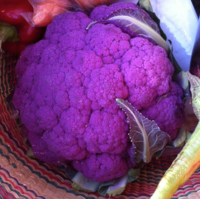
Photo from wikipedia
Abstract Black rice is reportedly more nutritious than common white rice and has specific health-promoting effects. To accurately evaluate nutritious and functional differences between black rice and white rice, we… Click to show full abstract
Abstract Black rice is reportedly more nutritious than common white rice and has specific health-promoting effects. To accurately evaluate nutritious and functional differences between black rice and white rice, we generated a homogenous mutant line with anthocyanin-deficient mutation (AM22) from the black rice variety Heishuai. Compositional and metabolomic analyses identified significant content differences in six amino acids, vitamin B2, copper, manganese, and 257 secondary metabolites between AM22 and Heishuai. Meanwhile, the result from mouse ear edema model suggested that anti-inflammatory effect of AM22 was significantly attenuated compared with Heishuai. Transcriptional analysis revealed that the anti-inflammatory effects elicited by black rice was coupled with expression alterations of 32 inflammation-associated genes in mice and four of them (Il-1b, Il-17ra, Icam1, and Ptgs2) were confirmed by western blotting assay. Our results provide insights how anthocyanin biosynthesis affects the nutritional and functional values of black rice.
Journal Title: Journal of Cereal Science
Year Published: 2021
Link to full text (if available)
Share on Social Media: Sign Up to like & get
recommendations!